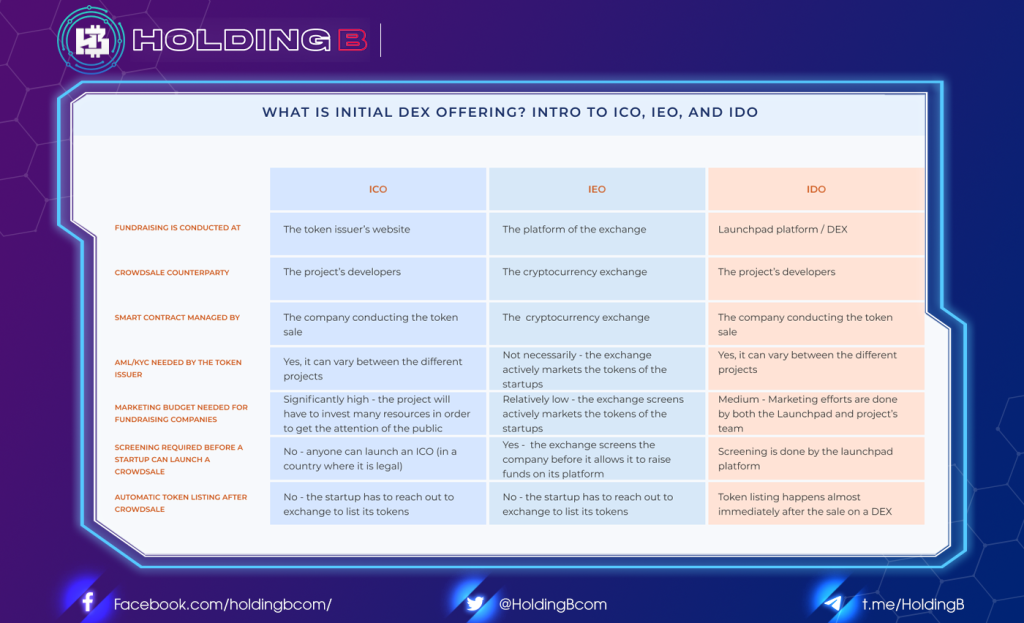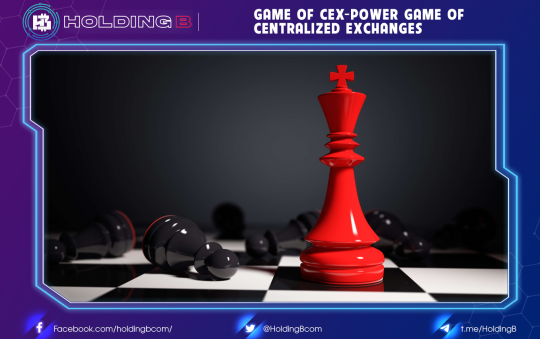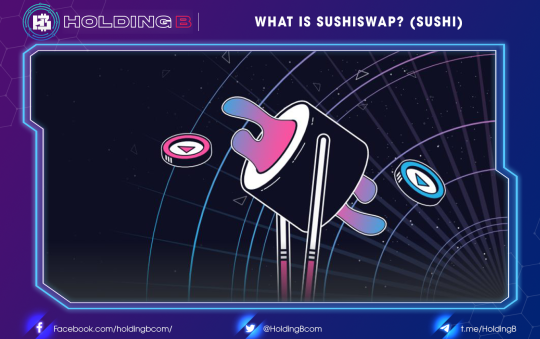What Is an Initial DEX Offering (IDO)?
It’s worth noting that the original concept of initial DEX offerings has shifted tremendously over the years, and, in its current most popular form, it has little to do with what it was intended to be back when the first IDO took place.
In its essence, an initial DEX offering is a successor to ICOs and IEOs in that it aims to raise money and bootstrap a project. However, unlike ICOs and IEOs where the tokens are sold prior to the listing, with IDOs, they are listed immediately on a decentralized exchange (DEX) – hence, the name.
The first-ever IDO to take place happened in June 2019 – Raven Protocol. The team behind the protocol chose to use Binance’s decentralized exchange – the Binance DEX. They put up the token there at a specific price, and traders could buy it until the hard cap was reached. This is how the first few IDOs took place on the majority of platforms.
This particular way of fundraising had, in theory, a few powerful benefits, including:
- Fast trading
- Immediate liquidity
- Open and fair fundraising
However, investors weren’t satisfied. The reason was that these token sales would essentially get bought up in a matter of seconds, leaving little chance for the average Joe investors to get a share and participate. The notion that they were getting scooped up by bots and insiders was born, and the industry had to adapt to satisfy the growing demand.
This led to the birth of IDO launchpad platforms – one of the hottest topics of late 2020 and 2021.
What is Initial DEX Offering? Intro to ICO, IDO, and IEO
If the coin/token enters the market for the first time and starts trading on a specific DEX, it’s termed an initial DEX offering (IDO). Thus, the IDO is a unique chance for a crypto project owner to attract money for the project’s progression and at the same time enjoy full decentralization and privacy of fundraising.

IDOs differ significantly from other popular models of fundraising in crypto, such as ICOs and initial exchange offerings (IEOs). Here is a brief account of their distinctions:
- In terms of fundraising, IEOs attract money via a new token’s sale on a CEX, ICOs are sold through blockchain platforms, and IDOs – through DEXs.
- Marketing and advertising are undertaken by the responsible CEX (for an IEO), DEX (for an IDO), and an in-house project team (for an ICO).
- The issue of trust is handled differently. To participate in an IEO on a CEX, users need to complete KYC forms and comply with the KYC/AML regulations. DEXs do not require KYC/AML compliance from their IDO applicants. In the case of direct ICO participation, requirements differ, but the problem of fake or misleading information from the coin’s issuer is a pressing problem.
- Security trade-offs are also unique in all three models. IEO participants benefit from high security levels guaranteed by the CEX, while IDO participants enjoy total privacy and control over their funds, coupled with asset security. ICO participation is much less secure as the users provide funds directly to the ICO organizer and have no guarantees of success.
- Different mechanics of these models contribute to distinctions in fees. Thus, a CEX charges fees from the users for an exchange, while ICOs do not presuppose any fees. DEXs also pose no fees, with the users only needing to pay the gas fee for the transaction’s completion on the blockchain.
How does the Initial DEX Offering Work?
Consider how to generate an IDO for your token. Entrepreneurs interested in making their tokens tradeable must first submit their proposal to the launchpad or a platform specializing in IDO Service. The project draws investors and potential traders who acquire tokens during the pre-IDO period, prior to their availability on the DEX, if the project looks to be profitable.
Traders acting as token sellers have two options for allowing applicants to purchase their crypto tokens:
By setting a fixed price for the crypto token that changes only when demand increases and the price increases;
Or by organizing an auction in which the price is dynamically determined by supply and interest or demand fluctuations.
As soon as the IDO and Token Generation Event (TGE) are successfully completed, the token is listed on the DEX and made available for trade. The listing is accomplished through the use of an automated market maker (AMM).
Additionally, pre-IDO platform crypto token sales are sometimes handled on a lottery basis, with various participants staking their funds or assets and engaging in a lottery to determine whether or not they will win some cryptocurrency at the conclusion.
Benefits of IDOs
Those who decide to opt for an IDO may enjoy several indisputable benefits of this fundraising model. Experts point out the following IDO strengths:
- Cost efficiency
Since DEXs do not pose any fees on the users and operate based on the smart contract regulation, both users and IDO launchers may benefit from the comparatively lower cost of IDOs compared to other fundraising options. The only commission is the gas fee from the peer-to-peer transaction, which usually doesn’t exceed 0.3%.
- Quick launch to market
Instead of launching an extensive marketing campaign and organizing all the technicalities, IDO organizers can see their coin starting to trade on the very first day of the project’s launch on the DEX. If the DEX has a large liquidity pool and numerous users, the coin’s value may quickly increase as a result of traders’ wish to gain profit from its popularity.
- Access to liquidity pools
The amount of money attracted from ICOs depends on how well the marketing campaign was organized and how many investors were engaged. During an IDO, however, the token’s owner gets access to an existing user database and liquidity pool of the functioning exchange, thus increasing their chances of having their token actively traded and increasing in value.
- Openness and fairness of transactions
IDOs promise both the token owners and the DEX users greater security and transparency of activities. The former get their coins publicly traded, while the latter are in full control of their funds and assets. DEXs thus eliminate the risk of fake tokens or scams by checking the IDOs before their launch.
- Security
DEX promises greater anonymity to token buyers because of no need to comply with KYC/AML requirements. Besides, the users don’t need to transfer funds to a DEX wallet, thus preserving full control of their money. As a result of such an organization of trading, users enjoy greater transaction security.
How to Invest in an IDO?
Participating in an IDO is a process that can vary depending on the launchpad of choice. However, there are a few requirements that most projects tend to follow, regardless of the launchpad.
Step 1: Perform KYC/AML
The wide majority of IDOs require their investors to perform a KYC/AML screening procedure before allowing them to participate. This is done because the regulatory framework for cryptocurrencies in the majority of countries has become a lot more stringent. To avoid any potential legislative issues, almost all IDO projects conduct a KYC. This is also the reason for which US citizens are rarely allowed to participate.
Step 2 (Optional): Hold Launchpad Tokens
This is also something that almost every launchpad platform requires potential investors to do. If they want to be eligible for an allocation, they must hold a certain number of its tokens or provide liquidity in some shape or form.
As mentioned above, sometimes it increases the chances of winning an allocation.
Step 3 The Whitelisting Process
As mentioned above, to be eligible for an allocation, users need to be whitelisted. Apart from a KYC check-up, they also have to perform various tasks such as following certain pages on Twitter, retweet certain posts, and join specific Telegram groups.
Step 4 Have a Web 3.0 Wallet Ready
To participate in an IDO, users have to interact with the launchpad platform to first invest and, second, to receive their tokens.
There are plenty of options out there with the most widely used wallet, also one of the most reputable, being MetaMask.
Step 5 Learn How to Use Uniswap and Other DEXes
Assuming you manage to get an allocation and receive the tokens in your wallet, you would want to start trading them eventually.
To access the immediate listing, you should familiarize yourself with how Uniswap and other decentralized exchanges work. Given that a lot of them share similar interfaces with Uniswap, this guide is a great starting point.
Initial DEX Offering List
IDOs are plentiful, with hundreds of new crypto projects launched in hope to attract investor funds. If you’re interested in IDO participation, you can always check the list of ongoing and upcoming IDOs on the DEX platforms and popular launchpads. The most awaited IDOs of 2021, which already completed or take place at the moment, include:
- BENQI
- MakiSwap
- TeraBlock
- Don-Key
- Refinable
- Cere Network
TOP 5 Initial DEX Offering Platforms
Once you decide to participate in an IDO or consider launching your own token via the IDO model, it’s time to choose the platform for jumpstarting your asset correctly. Here are the top 5 IDO platforms to choose from:
- Polkastarter
Polkastarter is one of the world’s most famous IDO platforms where investors reap enormous profits from IDO participation, and IDO launchers get guaranteed crowdfunding. They give access to IDO investment to those winning in a lottery and holders of the POLS token.
- Binance Launchpad
This subsidiary of Binance gives access to over 10 million users to IDO projects. Here, you need to file KYC forms to take part in the IDO offerings. IDO creators also need to go through checks to get access to the platforms’ user base.
- TrustSwap
This ETH-based launchpad started hosting IDOs in 2020, helping users and IDO creators come together and enjoy mutually satisfying, secure terms. The platform also has its own SWAP token that allows members to stake for new IDOs.
- Card Starter
Positioning itself as a decentralized accelerator and swapping platform, Card Starter runs on the Cardano blockchain. Users can stake for new IDOs with the help of their CARDS tokens.
- BSCPad
This platform was the first to operate on Binance Smart Chain Network. It enjoys the reputation of a revolutionary launchpad solving the flaws of previous launchpads, mainly in terms of user staking, security, and IDO process organization.
See ya in the next article !
Don’t forget to follow useful articles about Crypto Market from team Holding B !!!
- Telegram Channel: https://t.me/HoldingBcom
- Telegram Group: https://t.me/HoldingB
- Website: https://holdingb.com/
- Twitter: https://twitter.com/HoldingBcom
- Facebook: https://www.facebook.com/holdingbcom





